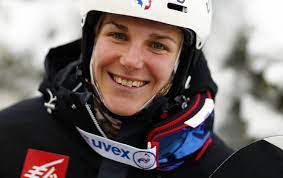| Happy Birthday : |

180 Air
An aerial manoeuvre in which the snowboard rotates 180 degrees — half of a spin.
360 Air
An aerial manoeuvre in which the snowboard rotates 360 degrees — one full spin.
540 Air
An aerial manoeuvre in which the snowboarder rotates 540 degrees — one-and-a-half spins.
720 Air
An aerial manoeuvre in which the snowboarder rotates 720 degrees — two full spins.
900 Air
An aerial manoeuvre in which the snowboarder rotates 900 degrees — two-and-a-half spins.
Air to Fakie
Any trick in the halfpipe in which a rider approaches the wall riding forward, no rotation is made, and the rider lands backwards.
Alley-Oop
Any manoeuvre in the halfpipe in which the rider rotates 180 degrees or more in an uphill direction.
Andrecht
A handplant using the rear hand while grabbing the board with the other.
Backside
The side of the snowboard on which the athlete’s heels rest.
Backside Air
A trick performed on the backside wall of the halfpipe where the athlete grabs the heel edge of the board with the front hand.
Backside Handplant
A maneuver where the rider places either both hands or the rear hand on the lip of the halfpipe and rotates 180 degrees in the backside direction.
Backside Rotation
Rotating clockwise for a regular-footed snowboarder or rotating counter-clockwise for a goofy-footed snowboarder.
Backside Wall
The side of the halfpipe that is behind the rider when the snowboarder rides straight down the halfpipe.
Blindside
Any rotation in which the snowboarder has oriented himself blind to his takeoff or landing and must stretch to look over his shoulder. Such a technique usually increases the level of difficulty.
Bone
To extend out one or both legs.
Bonk
Hitting an object while riding a snowboard. To hit a non-snow object with the snowboard while riding as part of a trick.
Boost
To become airborne off of a jump or halfpipe.
Bust
A more enthusiastic version of to the verb “to do”. To “bust a move”.
Cab
Short for caballerial.
Caballerial
A maneuver where skater rides backward up to the lip of a ramp, completes a 360-degree air rotation in the air, and lands down the ramp riding forward.
Camber
The amount of space beneath the centre of a snowboard when laying on a flat surface with its weight resting on its tip and tail.
Cant
The angle at which either foot points pigeon-toed or duck-footed. Foot angle affects whether the snowboarder’s knees bend toward or away from each other.
Carve
To snowboard fast through corners.
Centered Stance
Stance is centered when bindings are mounted on the snowboard with the distance between the tip and the front binding is the same as that between the tail and the rear binding. This allows for similar control riding forwards or backwards.
Chatter
Vibration of the snowboard as a result of high speed, tight turns or icy conditions.
Corduroy
A term to describe the tracks left on a trail by a snowcat groomer. Corduroy is usually great for making clean turns.
Corkscrew
Sideways rotation.
Crail Air
An aerial manoeuvre in which the athlete’s rear hand grabs the toe edge in front of the front foot while the rear leg is straight.
Crippler Air
An aerial manoeuvre in which the snowboarder performs a 180-degree flip. The athlete approaches the wall of the halfpipe riding forward and lands riding forward.
Dampening
A shock-absorbent material similar to rubber that is sometimes laminated into snowboards to reduce vibration (or chatter) and increase handling.
Detune
To slightly dull the edges of the snowboard.
Double Grab
Performing two separate grab tricks in one aerial manoeuvre.
Double-Handed Grab
Grabbing the snowboard with both hands in an aerial manoeuvre.
Duckfoot
A snowboard stance where the athlete’s toes point outward.
Effective Edge
The length of the snowboard’s metal edge that makes contact with the snow.
Eggplant
A one-handed 180-degree invert in which the front hand is planted on the lip of the halfpipe wall and the rotation is backside.
Elgeurial
An invert in which the halfpipe wall is approached fakie, the rear hand is planted, a 360-degree backside rotation is made, and the rider lands going forward.
Fakie
Riding backwards.
Fall Line
The path that a snowboarder takes as he/she travels down a steep pitch.
Flat bottom
The area in the halfpipe between the two walls.
Flatground
Tricks performed on a flat slope.
Flex
The stiffness (or flexibility) of the snowboard. Different degrees of flex are used for different styles of riding.Freeriding
Snowboarding for fun, not competition, on any terrain except for a halfpipe.
Freestyle Snowboarding
The type of snowboarding that includes tricks; for example, riding a halfpipe.
Front Foot
The foot closest to the front of the snowboard. For regular-footed riders, the front is the left foot. For goofy-footed riders, the front is the right foot.
Front Hand
The hand closest to the front of the snowboard.
Frontside
The side of the snowboard the athlete's chest faces toward.
Frontside Air
Any air performed on the frontside wall of the halfpipe.
Frontside Handplant
A manoeuvre in which the rider places the front hand on the lip of the halfpipe and rotates 180 degrees in the frontside direction.
Frontside Rotation
Rotating counter-clockwise for a regular-footed snowboarder or rotating clockwise for a goofy-footed snowboarder.
Frontside Wall
The side of the halfpipe that is in front of the snowboarder when he/she rides straight down the halfpipe.Forward Lean
The degree to which the highbacks of traditional bindings or the boots of plate bindings keep an athlete’s ankles and calves bent over his/her toes.
GoofyFooted
Riding a snowboard with the right foot forward.
Grab
To hold the edge of the snowboard with one or both hands during an air or other trick.
Haaken Flip
An inverted aerial in which the snowboarder approaches the wall of the halfpipe riding backwards. At the lip of the halfpipe, the athlete flips backwards into the pipe and rotates 720 degrees, landing forward down in the pipe. Named after its originator Terje Haakonsen
.
Halfpipe
A vertical U-shaped snow structure used in freestyle snowboarding to catch air and perform tricks by travelling back and forth from one side of the halfpipe to the other.
HardBoots
Similar to alpine ski boots, hard boots are rigid and made from plastic. They are typically used for carving and racing.
Heel Drag/Overhang
Bindings should as centered as possible between the toe and heel edges. When they are placed too far toward the heel side, the heels drag in the snow while riding and interfere with turns.
HeelEdge
The edge of the snowboard closest to where the rider’s heels sit.
HeelsideTurn
A turn made on the heelside edge.
HighbackBindings
A type of binding that includes a piece that supports the ankle and calf while edging and making heelside turns.
Ho Ho
Any two-handed handplant.
HolePattern
The pattern of holes on the top of a snowboard through which the bindings are fastened.
Indy Air
An aerial manoeuvre performed on the backside wall with the rear hand grabbing the board between the bindings. Indy can also be used to describe the location of the grab.
Insert
A piece of metal laminated within a snowboard to secure the screws that attach the bindings.
Invert
A handplant.
Inverted 180
An aerial manoeuvre in which the snowboarder performs a 180-degree flip. The athlete approaches the wall of the halfpipe riding forward and lands riding forward.
Inverted Aerial
A trick in which the rider is airborne and upside-down.
JapanAir
An aerial manoeuvre in which the athlete’s front hand grabs the toe edge between the feet, the front knee is tucked, the board is pulled up and the back is arched.
Jib
To ride on a non-snow surface such as rails and logs.
J-Tear
Named after its originator Mike Jacoby
, this maneuver involves an invert in which the athlete rotates roughly 540 degrees in a front-side direction while planting one or both hands on the lip of the wall.
Leash
A device used to attach the snowboard to the athlete’s front foot stopping it from sliding away while getting in or out of the bindings.
Late
Incorporating a move into a trick just before the trick's completion.
Layback Handplant
A manoeuvre in which the rider places the rear hand on the lip of the halfpipe and rotates 180 degrees in the frontside direction.
Lien Air
An aerial manoeuvre on the frontside wall where the rider grabs the snowboard’s heel edge with his front hand and leans over the nose of the board.
Lip
The top edge of the halfpipe wall.
Lip Trick
Any trick performed on or near the lip of the halfpipe wall.
McEgg
An invert in which the athlete plants the front hand on the wall, rotates 540 degrees in a backside direction and lands riding forward.
McTwist
Named after skateboarder Mike McGill, the athlete approaches the halfpipe wall riding forward, becomes airborne, rotates 540 degrees in a backside direction while performing a front flip, and lands riding forward.Melonchollie Air
An aerial manoeuvre where the rider reaches behind the front leg with the front hand and grabs the heel edge between the bindings while the front leg is boned.
Method Air
An aerial maneuver on the backside wall where the rider grabs the heel edge with the front hand, bends both knees, and pulls the board to the level of the head.
Michalchuk
Named after its originator Mike Michalchuk, an invert done on the backside wall of the halfpipe where the rider does a backflip with a 180-degree backside rotation.
Miller Flip
An invert where the halfpipe wall is approached riding forward, the front hand is planted, a 360-degree front-side rotation is made, and the rider lands riding fakie (backwards).
Mosquito Air
An aerial trick in which the athlete reaches behind the front leg with his front hand and grabs the heel edge between the bindings. The front knee is then bent to touch the board.
Mute Air
An aerial manoeuvre where the rider grabs the snowboard’s toe edge with his front hand either between the bindings or at the front of the board.
Nollie
A method of obtaining air without jumping. It is performed by first lifting the rear foot, then lifting the front foot as the rider springs off the nose.
Nose
The front tip of the snowboard.
Nose Grab Air
An aerial manoeuvre in which the rider grabs the nose of the snowboard.
Nose Poke Air
A manoeuvre in which the athlete straightens the front leg and moves the board's nose away from the body, usually while grabbing the board.
Nose Slide
To slide along the edge of an obstacle like a handrail, ledge or ramp lip on the nose of the snowboard.
Ollie
A method to obtain air without jumping by first lifting the front foot, then lifting the rear foot as the rider springs off the tail.
Palmer Air
Named after its originator Shawn Palmer, an aerial manoeuvre in which the board is grabbed near the nose, pulled across the front of the body and pointed downward.
Parallel Giant Slalom
Two snowboarders race head-to-head down a course, turning through a series of gates.
Phillips 66
Named after skateboarder Jeff Phillips, an invert in which the athlete approaches the halfpipe wall riding fakie, plants the rear hand on the lip of the halfpipe while doing a front flip, and lands in the transition area riding forward.
Pipe Dragon
A grooming machine used to groom halfpipes.
PlateBinding
A binding system in which hard boots are attached to the snowboard by a flat plate similar to ski bindings.Pop Tart
An aerial move in which the rider goes up backwards and lands going forward, without rotating.
Quarterpipe
A halfpipe with only one wall.
Rail
Snowboards have two rails; each is comprised of a sidewall and an edge.
Railing
To make hard, fast turns.
Rear Foot
The foot mounted closest to the tail of the snowboard. For regular-footed riders, the rear is the right foot. For goofy-footed riders, the rear is the left foot.
Rear Hand
The trailing hand closest to the tail of the snowboard.
Regular-Footed
Riding on a snowboard with the left foot forward.
Revert
To switch from riding backwards to forward, or from forward to backwards.
Roast Beef Air
An aerial manoeuvre in which the rider grabs the snowboard’s heel edge between the bindings with the rear hand and straightens the rear leg.
Ride
Another term for snowboarding.
Rocket Air
An aerial manoeuvre in which the rider grabs the toe edge in front of the front foot with the front hand, the back leg is straightened and the board points perpendicular to the ground.
Rocker
The opposite of camber. When the snowboard is placed on a flat surface, it rests only on the centre portion.Rodeo Flip
An invert where the athlete rotates diagonally over his/her shoulder while flipping.
RollDown the Windows
A phrase used to describe when a snowboarder is caught off-balance and they rotate their arms wildly in the air to try to recover.
RolloutDeck
The horizontal part of the halfpipe wall that serves as a vantage point, waiting area, or walkway to the uphill end of the pipe.
RunningLength
The range of the bottom portion of the snowboard that comes in contact with the snow.
Sato Flip
An invert done on the front-side wall of a halfpipe in which the rider does a front flip with a 180-degree rotation front-side.
Seatbelt Air
An aerial manoeuvre in which the rider reaches across his/her body with the front hand and grabs the snowboard’s tail while the front leg is straightened.
Session
Non-specific length of time for which someone rides.
Shifty Air
An aerial manoeuvre in which the upper torso and lower body are twisted in opposite directions and then returned to normal. The front leg is usually straight.
Sidecut Radius
The measure of the circle's radius to which the sidecut of the snowboard corresponds. A small radius will make for tighter turning than a large radius.
Slob Air
The athlete performs a mute grab with the front hand while the back leg is straightened and the board is kept parallel to the ground.
Snowboard Cross
A competition in which four snowboard racers start in a pack down a course, racing against each other over rolling terrain and a series of jumps and ramps.
Soft Boots
Boots worn for freestyle and freeride snowboarding.
Speed Check
To slide sideways in order to quickly slow down before a jump or other situation where speed control is necessary.
Stalefish Air
An aerial manoeuvre in which the athlete grabs the heel edge behind the rear leg with the rear hand, while the rear leg is straightened.
Stance
The position of the feet, regular or goofy-foot, on the snowboard.
Step-In Binding
Binding system in which the rider steps into to engage it and pulls a lever to disengage.
Stiffy Air
Any aerial in which both legs are straightened and a grab is done.
Stomp Pad
The piece of non-slip material on the snowboard, attached to the back binding. The stomp pad provides a place to rest your back foot when getting on or off a lift.
Switchstance
Performing a trick while riding backwards when the manoeuvre is performed exactly like it would be if riding forward.
Tail
The rear tip of the snowboard.
Tail Grab Air
The athlete grabs the tail of the snowboard with the rear hand.
Tail Poke
Any manoeuvre in which the athlete straighten his/her rear leg and "pokes" the tail of the snowboard in a direction away from the body.
Tail Slide
To slide along the ground or an object solely on the tail of the snowboard.
Tail Wheelie
To ride solely on the tail of the snowboard with the nose in the air.
Taipan Air
An aerial manoeuvre in which the athlete reaches behind his/her front foot and grabs the toe edge between the bindings with the front hand. The front knee is then bent to touch the board.
Toe Edge
The edge of the snowboard on which the toes rest.
Toeside Turn
A turn made on the toeside edge.
Tranny
See transition.
Transition
The curved surface of the halfpipe walls between the flat section and the vertical portion of the wall. Also called tranny.
Traverse
To ride perpendicular to the fall line. In the halfpipe, a freestyle rider traverses the flat bottom in order to perform tricks on either wall.
Tuck Knee
A technique in which one knee is bent and the ankle is bent sideways to touch the knee to the snowboard between the bindings.
Twin Tip
A snowboard with an identically shaped nose and tail which enables the board to ride equally well in either direction.
Vertical
The vertical topmost portion of the walls of a halfpipe which allows the snowboarder to fly straight up into the air.
Wall
The opposing sections of the halfpipe.
Wet Cat
An inverted aerial in which the athlete plants the front hand on the wall, rotates 900 degrees in a backside direction and lands riding forward. It is a 900-degree McTwist.
Copyright Sportquick/Promedi




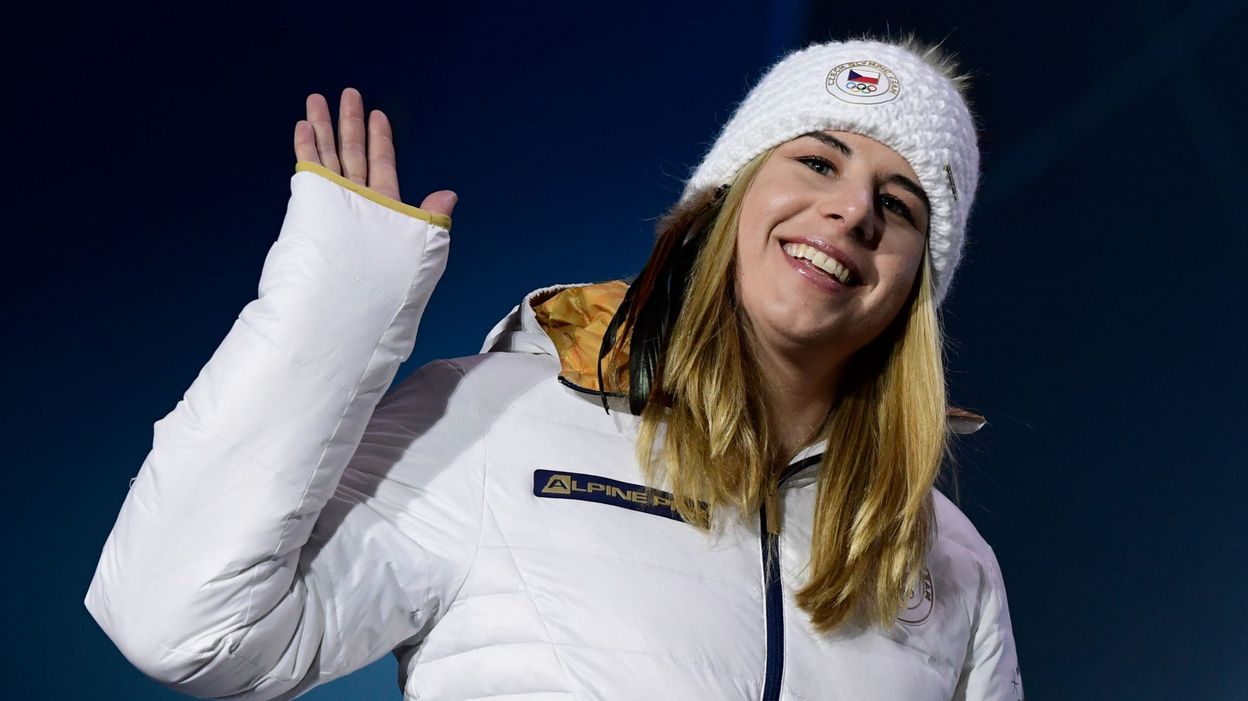
.jpg)
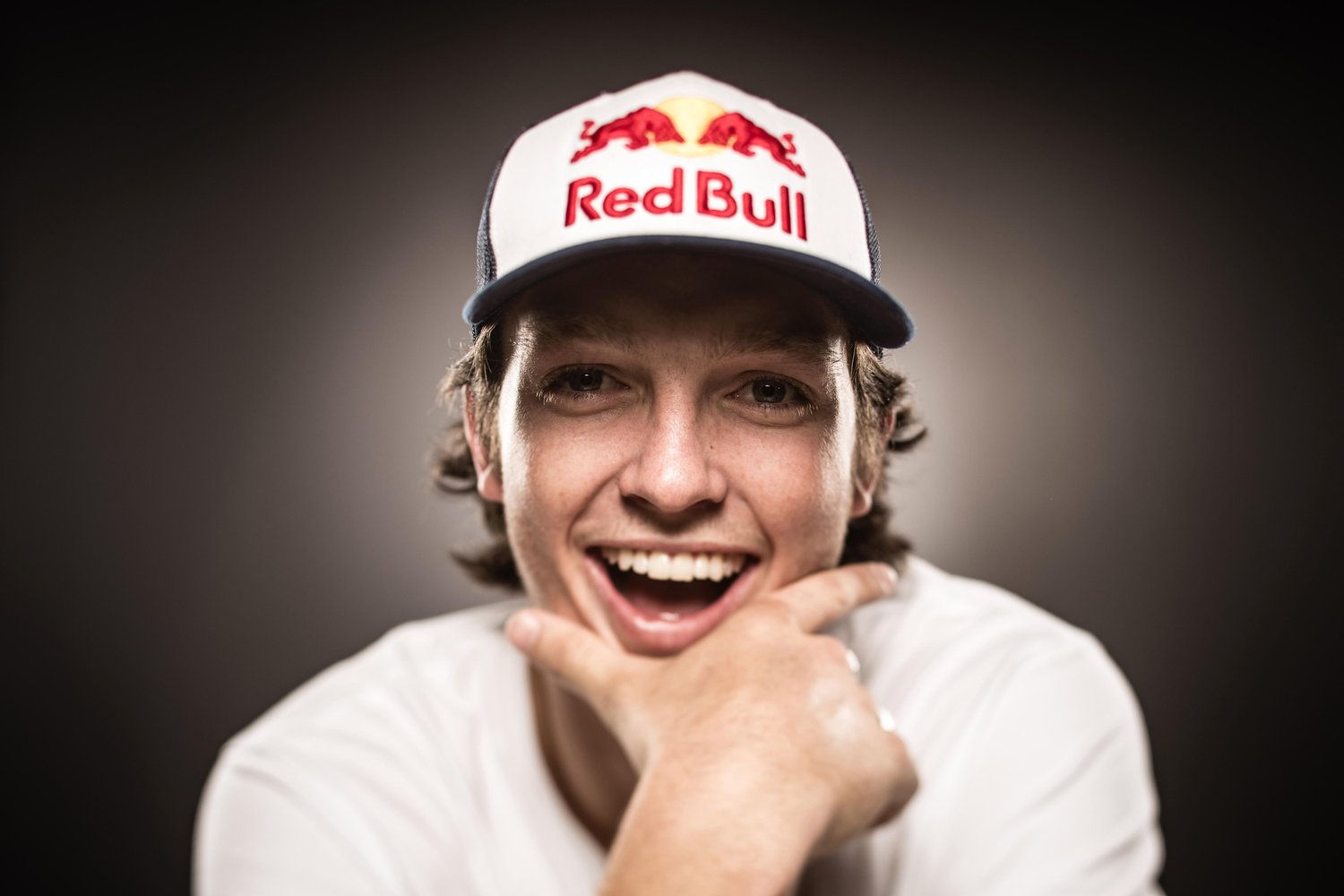
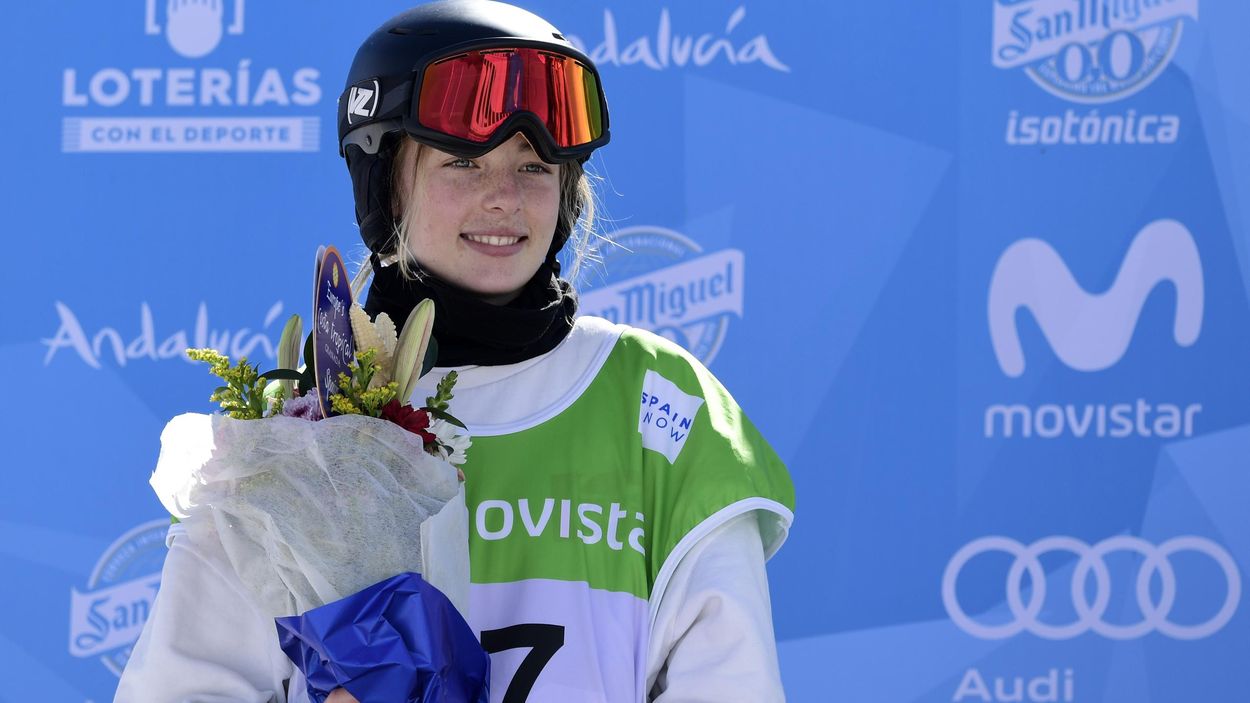
.jpg)
(15).jpg)
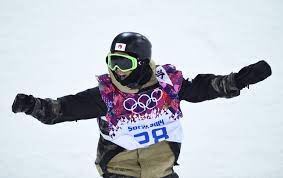
.jpg)
